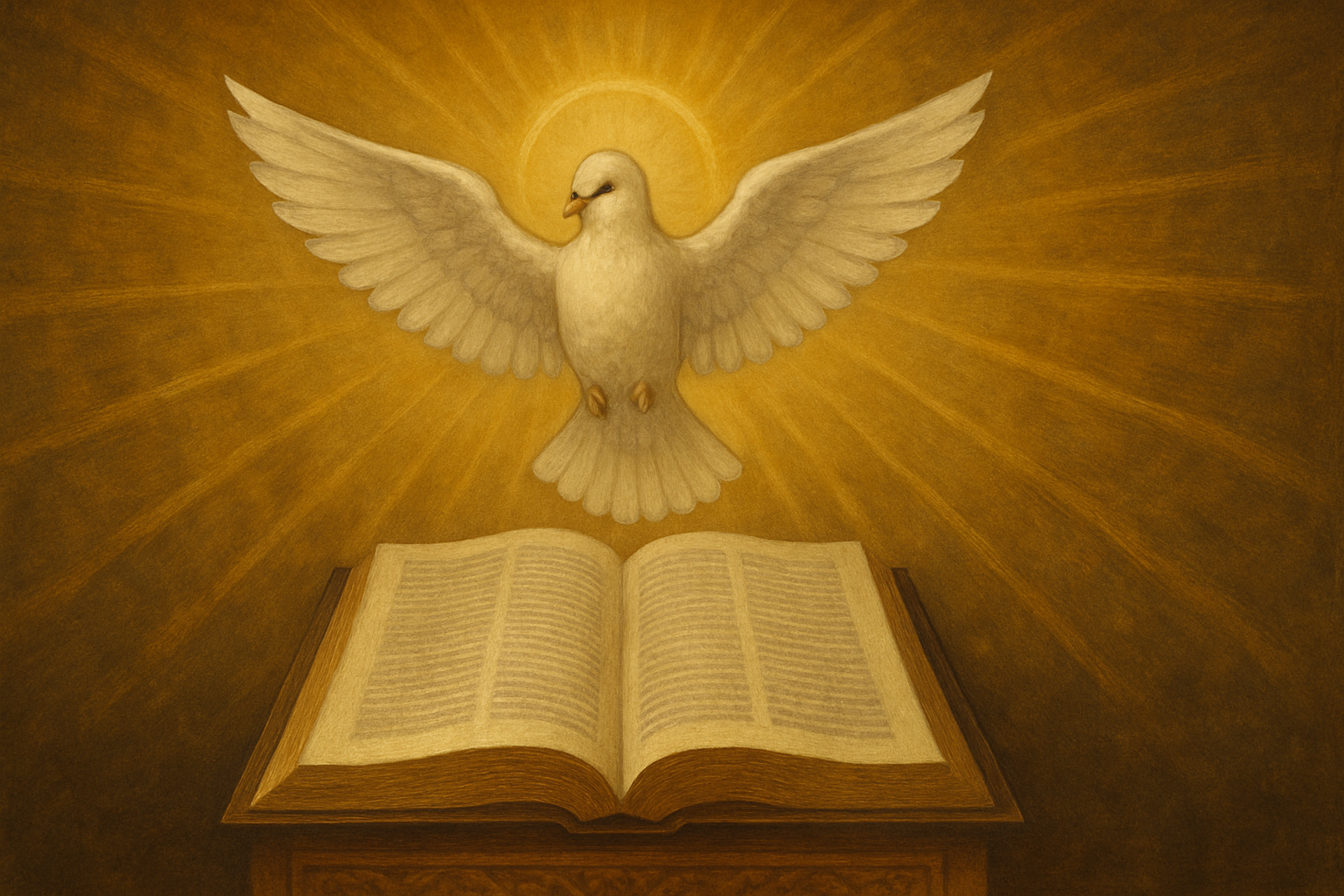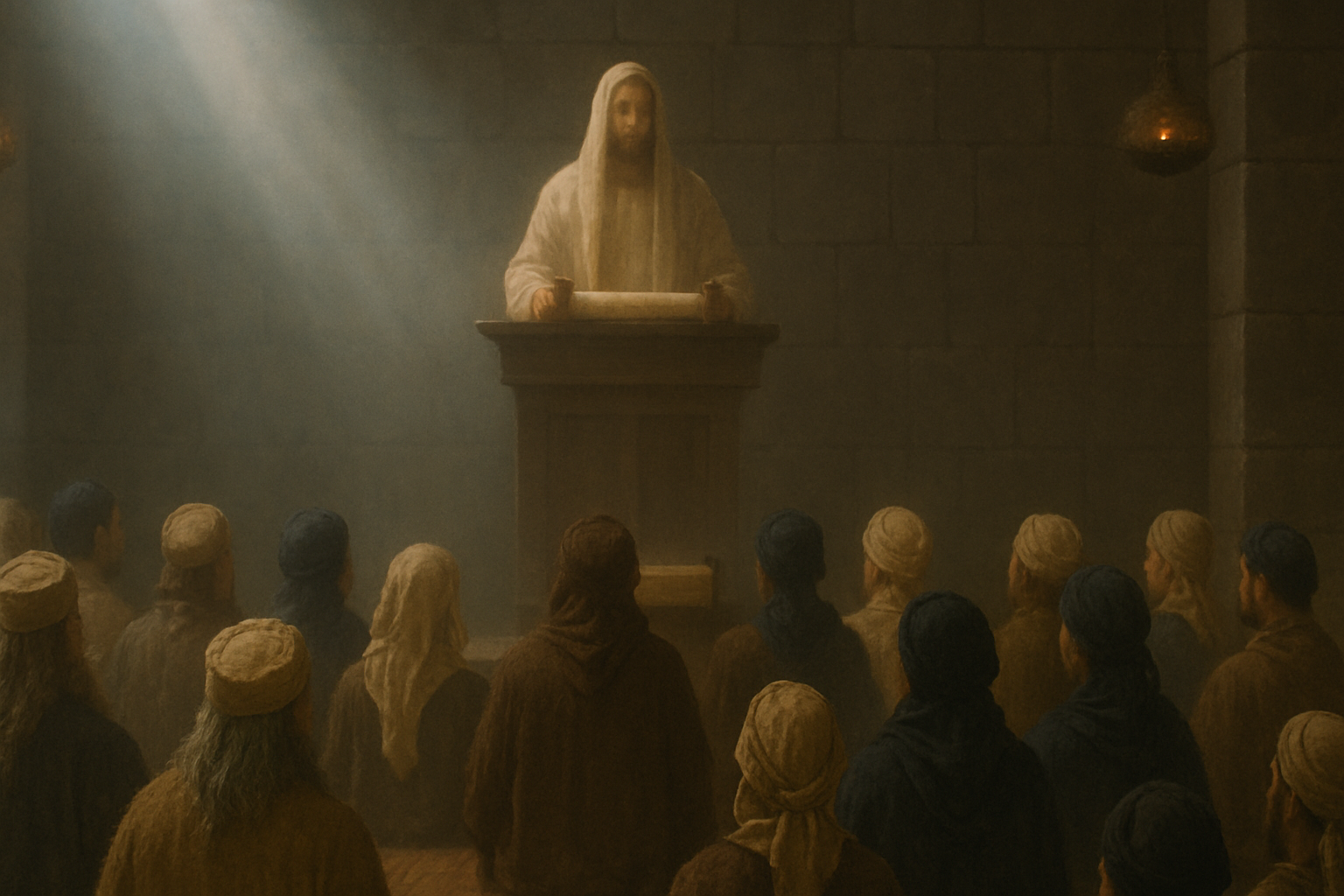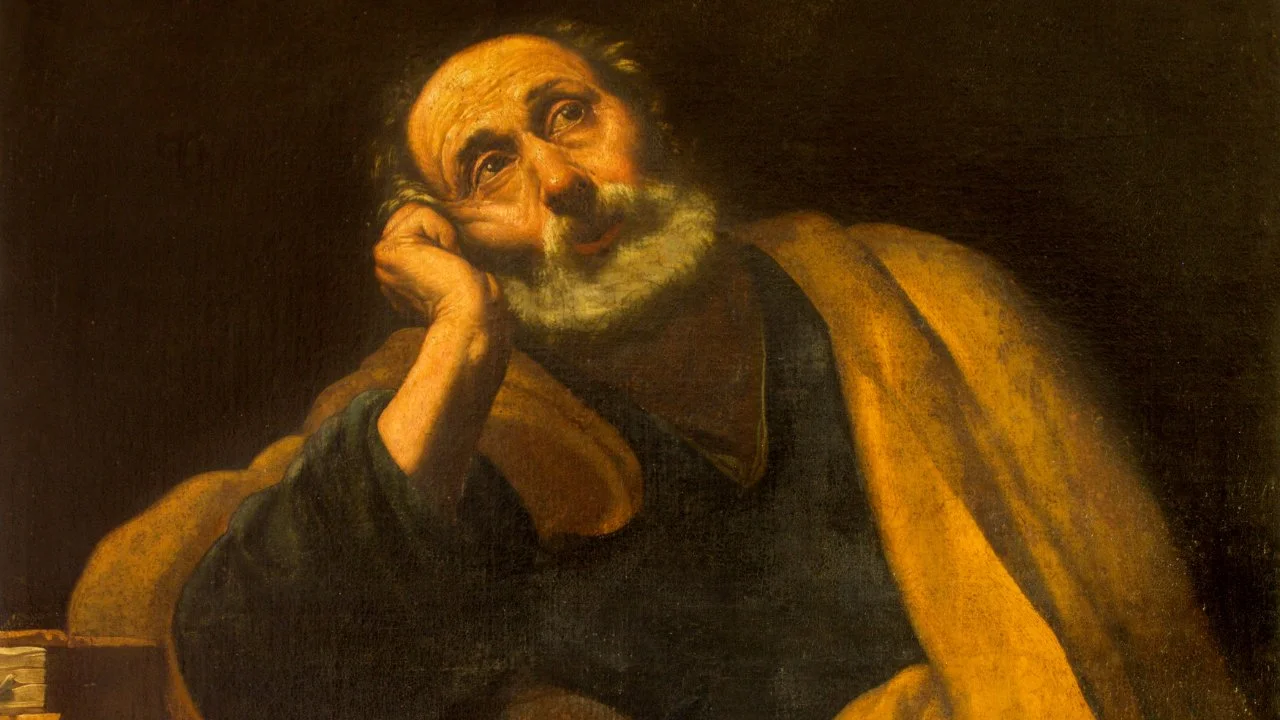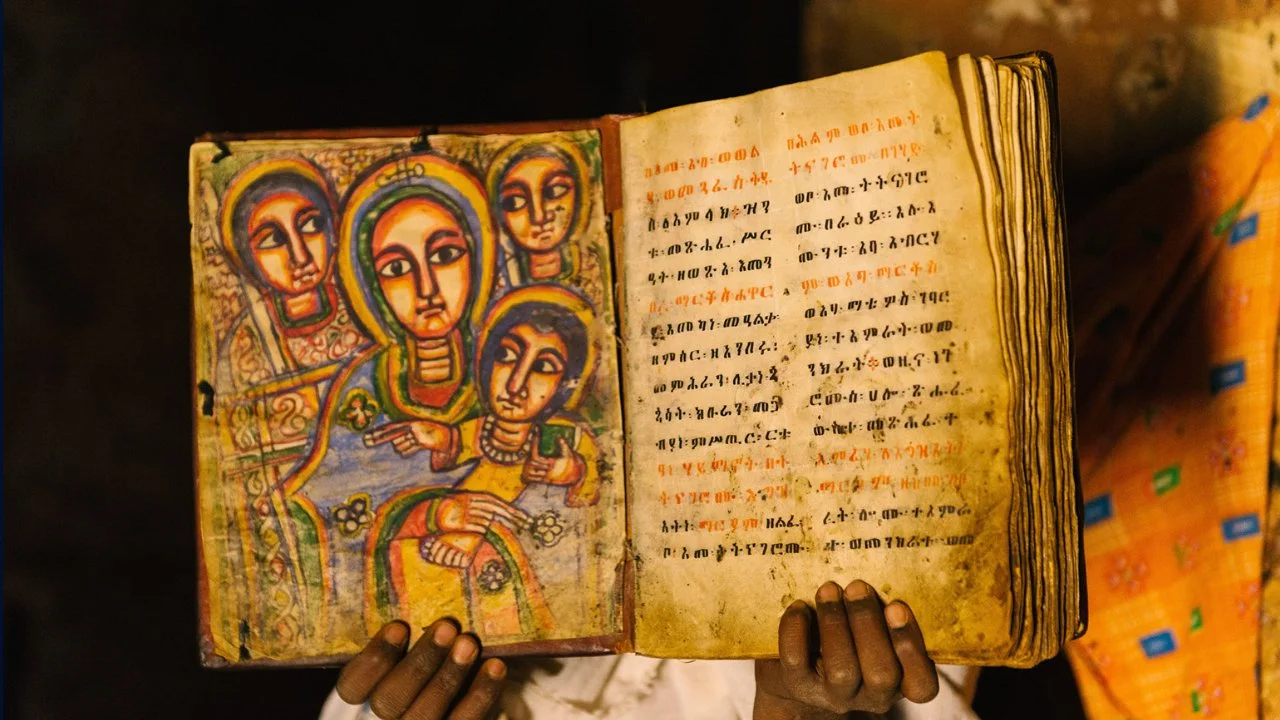Author: David Wilber
Some confusion surrounds the Son of Man in 1 Enoch, particularly in 1 Enoch 71:14 when this figure’s identity is revealed. This article will argue in favor of the plain reading of 1 Enoch 71:14 that identifies the patriarch Enoch as this figure.
According to The Parables of Enoch (1 Enoch 37-71), Enoch is taken into heaven and shown prophetic visions concerning an eschatological hero known as the “Son of Man.” This figure is also called the “Chosen One,” “Anointed,” and “Righteous One,” which are all titles referring to the same Messianic figure in the narrative. The author of this section of 1 Enoch clearly draws upon Messianic prophecies from Daniel, Isaiah, Jeremiah, Ezekiel, etc., to develop this figure.
According to the narrative, this Messianic figure will sit on a throne of glory and judge the deeds of the wicked people who have rejected God. Afterward, he will come to earth to dwell with the righteous (1 Enoch 45:3-6; 51:1-3). The narrative goes on to describe how he will destroy sinners and strike down kings and rulers who are against God (1 Enoch 46:4-5). It says he will be a light to the nations (1 Enoch 48:3-4). He will be worshipped by all who dwell on the earth (1 Enoch 48:5). In his name, the righteous will have salvation (1 Enoch 48:7). Finally, this Messianic figure will usher in an era of peace (1 Enoch 69:26-29).
At the end of The Parables of Enoch, Enoch is taken to the “heaven of heavens” where he sees a fiery heavenly palace. There, Enoch is greeted by God, the four archangels, and innumerable other angels. Surprisingly, Enoch is greeted as this Son of Man figure that he had seen in his visions:
And the Head of Days came with Michael and Raphael and Gabriel and Phanuel, and thousands and tens of thousands of angels without number. And he came to me and greeted me with his voice and said to me, “You (are) that Son of Man who was born for righteousness, and righteousness dwells on you, and the righteousness of the Head of Days will not forsake you.” (1 Enoch 71:13-14, emphasis added)
This quote comes from The Hermeneia Translation.[1] If this translation of 1 Enoch 71:14 is correct when it identifies Enoch as the Messianic figure, then this should impact how much significance we place on these writings. If the author of The Parables of Enoch intended to identify Enoch as this figure who fulfills these Messianic prophecies, then that puts The Parables of Enoch—that is, 1 Enoch 37-71—in direct conflict with the teachings of the New Testament concerning the identity of the Messianic Son of Man.
Do we have good reasons to accept this translation as correct? Many who have read 1 Enoch might point out that some older translations render the text differently. For instance, the popular 1912 translation from R. H. Charles has the verse in the third person rather than the second person.[2] Thus, Charles’ translation reads, “This is the Son of Man.”
This difference in translation has some big implications in regard to the revelation of the Son of Man’s identity! If Charles’ translation is correct, then Enoch is not being revealed as this figure but is being directed to a separate figure. So, then, which translation is correct? Should the verse read, “You are the Son of Man” or “This is the Son of Man”?
First, we might ask why there is a difference in translation. Enochic scholars have long been puzzled by Enoch’s identification as the Son of Man in 1 Enoch 71:14 because it means that, in his visions, Enoch didn’t recognize himself as this figure until his identity is revealed to him at the end of the story. As scholar Leslie W. Walck writes, “If this reading is authentic, then it is the only instance of apocalyptic auto-vision that survives, in which the seer does not recognize himself.”[3]
Charles was skeptical about Enoch not realizing that he was seeing himself in his visions. Thus, he emended the text of 1 Enoch 71:14 in light of this skepticism. Walck explains:
Charles’ solution was to emend the text of 1 Enoch 71:14 to the third person instead of the second person. Thus Charles read, “This is the Son of Man. . .” rather than “You are the Son of Man. . .” Then he made the necessary changes in the rest of the text to bring it into harmony with the 3rd person rendering. He also suggested that a paragraph, which revealed the identity of the Son of Man, has been lost. But this extensive emendation has no surviving textual basis in any of the manuscripts, and for this reason is to be rejected [emphasis added].[4]
Renowned scholar John J. Collins likewise has criticized Charles’ approach:
The solution of Charles was to emend 71:14 to read “this is the Son of Man . . .” and change “you” to “him” in the following verses. This procedure has no basis in the text and is clearly unacceptable.[5]
As Walck points out, Charles theorized that a lost passage revealed the Son of Man figure as someone other than Enoch. Then, based on this theory, he deliberately mistranslated the Ethiopic text to reflect a third person rendering rather than what the text actually says. In Charles’ translation, between verses 13 and 14 of Chapter 71, he inserts the following comment:
“[Lost passage wherein the Son of Man was described as accompanying the Head of Days, and Enoch asked one of the angels (as in 46:3) concerning the Son of Man as to who he was.]”[6]
The problem is that no evidence has ever surfaced to substantiate Charles’ theory on which his translation of this passage is based. In other words, Charles’ translation of the passage is driven by a baseless theory. In fact, in the footnotes of his translation, Charles admits to emending the text and provides the correct translation, acknowledging that his rendering doesn’t reflect what the text says. For this reason, modern Enochic scholarship unanimously rejects Charles’ translation in favor of a literal rendering of what the verse actually says.
While R. H. Charles was certainly a great scholar in many ways—especially for his time—it is no secret that his work was driven by certain presuppositions, which led to his positing interpolations and emendations a little too freely in his translations.[7] Thus, when it comes 1 Enoch 71:14, it would be good to follow the lead of T.W. Manson: “Here we abandon Charles, who has rewritten the rest of the passage in accordance with his view of what Enoch ought to have said.”[8]
In summary, we have every reason to accept a literal translation of the passage rather than the emended translation offered by R.H. Charles. Thus, the verse should read, “You are that Son of Man,” identifying Enoch as this Messianic figure.
Even still, a few objections have been raised against Enoch’s identification as the Son of Man figure. First, it’s suggested that the “Son of Man” title identified with Enoch in 1 Enoch 71:14 is distinct from the eschatological hero described throughout the rest of the narrative. In other words, Enoch is a son of man—that is, a righteous person translated to heaven to reveal hidden secrets—but not the Son of Man, the chosen Messianic figure who sits on God’s throne and judges the earth as described throughout the narrative.
The problem with this suggestion, as Walck explains, is that “the author has not given any indication that this ‘son of man,’ Enoch, is different from the term used in the rest of Par. En. [The Parables of Enoch]”[9] Indeed, nothing in the text indicates that the term used of Enoch is different from the term used of this Messianic figure. Moreover, according to scholars, the entire flow of the narrative seems to lead to the revelation of Enoch as this figure in a dramatic climax to the story. Enoch is then described in the same terms used of that Son of Man in the visions:
The whole flow of the narrative points to Enoch’s dramatic identification as the Son of Man. The attributes with which he is spoken of here cohere extremely well with the Son of Man of the visions. He is bathed in righteousness: born for it, it abides with him, and God’s righteousness will not forsake him (1 Enoch 71:14). Further, God promises him peace and that all the righteous will be eternally present with him (1 Enoch 71:15-16). These attributes all tend to underscore Enoch’s identification as the Son of Man, not merely as one of the righteous humans who are already in heaven. For the reader, the identification of Enoch and the Son of Man is dramatic, but it has been prepared for.[10]
In summary, the idea that Enoch is acclaimed by Michael as just another righteous human “is anticlimactic and has not been prepared for by the author.”[11] The evidence points away from the “Son of Man” title used in 1 Enoch 71:14 meaning just a righteous human that is distinct from the eschatological hero referred to by the same title. It’s more likely that Enoch is identified as the very Messianic figure that he had seen in the visions.
Another objection is that 1 Enoch 70:1 seems to distinguish Enoch from the Son of Man:
And after this, while he was living, his name was lifted up into the presence of that Son of Man and into the presence of the Lord of Spirits from among those who dwell on the earth. (1 Enoch 70:1)
How do we resolve this apparent contradiction between 1 Enoch 70:1 and 1 Enoch 71:14?
Unlike 71:14, there is a textual variant of 70:1 within the actual manuscript evidence, which gives us warrant for an alternative translation. Citing this textual variant, which omits the preposition ba-xabēhu (“the presence of”), Walck gives the following translation:
And it came to pass after this the name of that Son of Man was raised, while alive, to the presence of the Lord of Spirits from those who dwell on earth.[12]
This translation implies “that it is not the name that is raised to the Son of Man, but the name of that son of man (i.e., a human being, Enoch?) that is raised, while alive, to the Lord of Spirits.”[13] It is beyond the scope of this article to list all of the reasons in favor of Walck’s proposed translation of 70:1, but in his book, Walck cites several detailed grammatical and contextual reasons why this variant manuscript better reflects the original wording and therefore is to be preferred.[14] This proposed translation would remove the apparent contradiction and also “prepare much more consistently for the later identification of Enoch and the Son of Man in ch. 71.”[15]
However, even if we stick with the majority witness in the available manuscripts of the passage, the apparent contradiction can still be resolved. In his paper, “Righteous One, Messiah, Chosen One, and Son of Man in 1 Enoch 37-71,” scholar James C. VanderKam agrees that it’s “unlikely that 70:1 draws a separating line between Enoch and the son of man.”[16] He goes on to discuss how this verse ought to be interpreted in light of its context and literary structure:
The verse functions as an introduction to all of chs. 70-71, as Sjöberg noted, and summarizes what happens from 70:2 to 71:16. It would be remarkable if at the beginning of this artistically structured unit, there was a statement that contradicted what the unit itself forthrightly declared. What the author appears to have intended in 70:1 was that Enoch's name was elevated to the place where those characters whom he had seen in his visions were to be found, namely in the throne room of the celestial palace. That is, he does not see the son of man here but begins his ascent to the place where he himself will perform that eschatological role—perhaps at this time becoming one with his heavenly double, now that his earthly sojourn has ended […] No passage requires that one think of a separate being called the son of man existing in heaven while Enoch lives elsewhere. Enoch sees the son of man in visions of the future, not in disclosures of the present. He is seeing only what he will become [emphasis added].[17]
Finally, another suggestion is that the verse identifying Enoch as the Son of Man was added much later. That is to say, perhaps the original author didn’t identify Enoch as the Son of Man, but a Jewish scribe added the verse later as a polemic response to Christianity.[18]
While that’s possible, it’s much more likely that the phrase is original. Even scholars who have previously posited the theory that 1 Enoch 71 was a redactional addition no longer see that to be the case.[19] Scholars confirm that Enoch’s identification as the Son of Man makes perfect sense according to the flow of the narrative; it’s the logical conclusion of the entire story.[20]
Thus, the teaching contained in 1 Enoch contradicts the teaching of the apostles concerning the Messiah. The author of The Parables of Enoch presents Enoch as the individual who fulfills Messianic prophecies concerning this eschatological hero. The apostles saw Yeshua as the fulfillment of these prophecies. All of this (among other reasons[21]) would lead to the conclusion that 1 Enoch is not inspired by God and therefore should not be considered to be a source of doctrine and theology.
This does not mean that 1 Enoch is worthless—far from it! 1 Enoch is a valuable primary source that gives us a window into the social history, ideas, and internal debates between the differing expressions of the Jewish faith of the Second Temple era. The apostles were, no doubt, aware of these writings and perhaps even influenced by them in some ways, as some scholars argue. But nothing in the New Testament leads to the conclusion that they considered the Enochic writings inspired, especially when some of the teachings contained therein contradict their own teachings about the Messiah.
But if the apostles didn’t consider the writings that make up 1 Enoch inspired, why does it seem that Jude quotes them? Why do other biblical authors allude to these writings, as some scholars argue? Semitic scholar Dr. Michael Heiser—a very pro-Enoch scholar—gives us a great perspective on how we ought to view the significance that 1 Enoch held to the biblical authors:
Just as preachers today quote commentaries, journals, news periodicals, or even television shows to drive home or illustrate a point, so the biblical writers used external material to draw attention and make a statement. Paul quotes from pagan Greek poets. The psalmists and prophets borrow vocabulary and paraphrase material from ancient Egyptian, Mesopotamian, and Syrian literature. Jude quotes a book from the Pseudepigrapha (ancient writings that falsely claim authorship by a biblical character). The people of biblical times knew the quoted material wasn’t inspired, but it had meaning for them and their audience [emphasis added].[22]
In short, the apostles’ use of 1 Enoch can be compared to other instances where they used extra-biblical material that was meaningful to their contemporary audience.[23] As Heiser explains, their use of this extra-biblical material does not require that they believed the material to be inspired. It would be like a pastor today quoting a popular movie. A movie might teach meaningful lessons that align with biblical values, but nobody today believes movies are inspired. In the same way, the apostles certainly could have alluded to, or even quoted from, 1 Enoch—emphasizing the parts of it that are true or relevant to their point—without believing in all its teachings or considering it inspired.
In conclusion, we need to appreciate 1 Enoch for what it is—pseudepigraphical literature. That is, literature falsely attributed to a figure in the past (in this case, Enoch). This type of literature was popular in the first century, and some of it, like the Enochic writings, had religious significance to certain sectarian communities in Judaism. We must not think of 1 Enoch as inspired Scripture. It was not religiously significant to the Messiah nor the apostles, and it even contradicts their teachings in some places. When we appreciate 1 Enoch as pseudepigraphical literature, we will be in a better place to rightly handle it in order to glean valuable historical insights about Second Temple Judaism.
[1] George W.E. Nickelsburg & James C. VanderKam, 1 Enoch: The Hermeneia Translation (Minneapolis MN: Fortress Press, 2012), p. 95
[2] R. H. Charles, The Book of Enoch or 1 Enoch (Oxford at the Clarendon Press, 1912), p. 145
[3] Leslie W. Walck, The Son of Man in the Parables of Enoch and in Matthew (New York, NY: T&T Clark International, 2011), p. 5
[4] Ibid.
[5] John J. Collins, The Apocalyptic Imagination: An Introduction to Jewish Apocalyptic Literature (Grand Rapids, MI: Wm. B. Eerdmans Publishing Co., 1998), p. 188
[6] Charles, pp. 144-145
[7] Collins, p. 15
[8] T.W. Manson, The Son of Man in Daniel, Enoch and the Gospels, BJRL 32 (1949-50) pp. 171-93
[9] Walck, p. 5
[10] Ibid., p. 7
[11] Ibid.
[12] Ibid., p. 132
[13] Ibid., p. 130
[14] Ibid., pp. 129-138
[15] Ibid., p. 130
[16] James C. VanderKam, “Righteous One, Messiah, Chosen One, and Son of Man in 1 Enoch 37-71,” in J. H. Charlesworth, ed., The Messiah (Minneapolis, MN: Augsburg Fortress, 1992), p. 184
[17] Ibid.
[18] Collins, p. 191
[19] Walck, p. 7
[20] VanderKam, p. 177
[21] See the teaching, Testing the Book of Enoch, which is a thorough analysis of 1 Enoch, its significance to the apostles, why it isn’t in the canon, and what role it plays in our faith today.
[22] Dr. Michael Hesier, What’s Ugaritic Got to Do with Anything? www.logos.com
[23] Paul’s quoting of Greek poems in Acts 17:28 comes to mind here. Surely he didn’t consider these poems that exalt Zeus to be inspired by the God of Israel.
About David Wilber
David is first and foremost a passionate follower of Yeshua the Messiah. He is also a writer, speaker, and teacher.
David’s heart is to minister to God’s people by helping them rediscover the validity and blessing of God’s Torah and help prepare them to give an answer to anyone who asks about the hope within them (1 Peter 3:15)…












